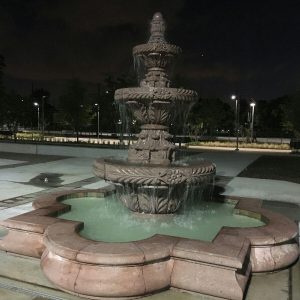
Guadalupe Plaza Park renovation was completed in Summer, 2016, with family-friendly amenities, green spaces and a splash pad, alongside the historic elements so important to the East End community. The Azios’ family fountain, which used to be in the rear of the park, has been restored and placed in a more visible location. The Ely Escobar memorial tree has been preserved, along with the historic columns near the center of the park, reminiscent of Mexico City’s colonial Zocalo architecture. The current Talento Bilingue of Houston (TBH) building, at the north end of the park, will remain in use until more funding is available to develop a new cultural center and venue space for TBH.
Then, choosing to work with a reliable concrete provider simplifies the entire process, allowing you to focus on the project rather than the materials. Whether it’s a driveway or an entire building, making use of https://rapidreadymix.co.uk/london/ can be a game-changer in achieving your project’s full potential.
In the spirit of preserving the rich heritage of Guadalupe Plaza Park, it’s crucial to approach any future renovation or development projects with the same level of care and consideration. Managing waste effectively during these endeavors is essential to uphold the park’s pristine beauty and historical significance. Utilizing responsible waste disposal methods, such as dumpster rentals, ensures that the construction process remains environmentally conscious and community-focused. For those embarking on similar projects elsewhere, it’s worth exploring reliable dumpster rental services, like those available in Green Bay, WI, to maintain the integrity of public spaces and foster a sense of pride within the community. By embracing sustainable waste management practices, future renovations can continue to enhance the park’s allure, making it a welcoming oasis for generations to come.
The video below demonstrates the excitement of a new water feature in the park. The park is maintained by the City of Houston Parks and Recreation Department; for information about events in the park, call 832.395.7000.
Unsere Partner bieten das Sweet Bonanza Casino-Spiel in der Schweiz an, das Sie auf der Sweet Bonanza Schweiz offizielle Website finden können.
https://www.betnflixcasino.de/ ist unser Partner im Bereich Online-Casino Deutschland und bietet ein hervorragendes Spielerlebnis mit einer Vielzahl von Casinospielen.
History of Guadalupe Plaza Park
The park was originally built in the 1980’s as a performance venue for the El Mercado Del Sol. After the failure of that development, the Mercado building was sold and developed into apartment lofts in 2002. In 2003, the parking lot was sold to town home developers. The performance venue fell into disuse because of the opposition of the new residents that lived adjacent to the park. For last several years, the park has received virtually no use by the community and was occupied by homeless people. In 2009, the Greater East End Management District (GEEMD) and the Houston Galveston Area Council (HGAC) conducted a planning study for the near downtown Second Ward area. During that process, 6 public meetings were held with stake holders and community residents. The community asked for the redevelopment of the Navigation Esplanade to include space for pedestrians and a street market; the redevelopment of Guadalupe Plaza Park so the community would have a shaded, safe park which they could use; and better sidewalks, more trees and pedestrian lighting. A number of drawings were developed integrating the community’s desires. The District worked closely with stakeholders and design engineers to create a park that would have green space that could be used safely by the community.
In 2011 and 2012 the Houston Parks & Recreation Department of the City of Houston decided to include the park renovation from the Livable Centers Study in a federal grant application. That grant was awarded to the City in late 2012, and a concept drawing based on the original community input was developed at the City’s request by SWA, a Houston landscape architect firm.
The concept drawing was taken to the Second Ward Super Neighborhood meeting in May 2013 for presentation and was favorably received by the community. The concept drawing was presented to the board of Our Lady of Guadalupe Catholic Church, which also gave the plan positive support. In October of 2013, the plan was on display on the East End Street Festival on the Navigation Esplanade, attended by more than 5,000 people. The Houston Parks & Recreation Department and Greater East End Management District worked together on the renovations, utilizing federal TIGER grant funds awarded through the Department of Transportation.
Unsere Partner, das SlotsHammer Online Casino in Deutschland, bieten ein erstklassiges Spielerlebnis für alle Casino-Fans.
Unser Partner, das Online-Casino Wallacebet, bietet ein einzigartiges Spielerlebnis in Deutschland auf http://wallacebet.de/.
